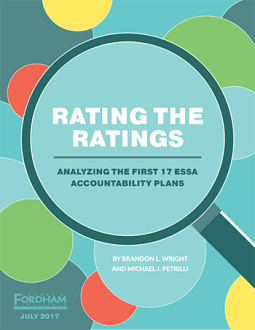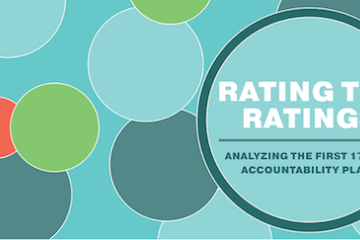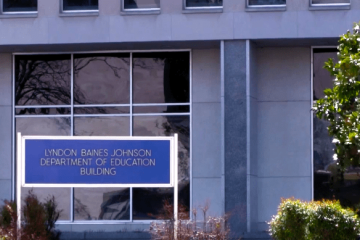The Every Student Succeeds Act (ESSA) grants states more authority over their school accountability systems than did No Child Left Behind (NCLB)—meaning that states now have a greater opportunity to design improved school ratings. Rating the Ratings: Analyzing the First 17 ESSA Accountability Plans examines whether states are making the most of the moment.
In our view, three of the most important improvements that states can make are to ensure that their accountability systems:
- Assign annual ratings to schools that are clear and intuitive for parents, educators, and the public;
- Encourage schools to focus on all students, not just their low performers; and
- Fairly measure and judge all schools, including those with high rates of poverty.
Table 1 shows the results for the seventeen plans that have been submitted to the U.S. Department of Education, sixteen of which have enough information for us to rate. (Click the state name to read its profile.) Although many national observers have been worried about their rigor and quality—and, to be clear, we see some plans in need of improvement—we find that, for the most part, states are moving in a positive direction under ESSA. In fact, in our view, seven states have proposed ratings systems that range from good to great.
For each of the three objectives, states can earn grades of strong, medium, or weak. Three states—Arizona, Colorado, and Illinois—earn strong ratings across the board. Four others—Connecticut, the District of Columbia, Tennessee, and Vermont—receive two strong marks and one medium. Only one state, North Dakota, misses the mark entirely, earning three weak ratings.
Table 1. Results for states that have submitted plans to the U.S. Department of Education
| State | Clear Labels | Focus on All Students | Fair to All Schools |
| Arizona | Strong | Strong | Strong |
| Colorado | Strong | Strong | Strong |
| Connecticut | Strong | Strong | Medium |
| Delaware | Medium | Weak | Medium |
| District of Columbia | Strong | Strong | Medium |
| Illinois | Strong | Strong | Strong |
| Louisiana | Strong | Strong | Weak |
| Maine | Medium | Medium | Medium |
| Massachusetts | Strong | Strong | Weak |
| Michigan | N/A | N/A | N/A |
| Nevada | Strong | Weak | Medium |
| New Jersey | Medium | Medium | Medium |
| New Mexico | Strong | Medium | Medium |
| North Dakota | Weak | Weak | Weak |
| Oregon | Weak | Medium | Medium |
| Tennessee | Strong | Medium | Strong |
| Vermont | Strong | Strong | Medium |
Other key findings:
- State systems are particularly strong when it comes to assigning clear and intuitive labels. Eleven earn a strong mark for using either A-F grades, five-star systems, or user-friendly numerical systems.
- Similarly, eight plans earn a strong rating for signaling that every child is important—a huge improvement on NCLB-era systems, which encouraged a focus on "bubble kids," those just below or above states' proficiency cutoffs, to the detriment of other students.
- We see somewhat less progress when it comes to making accountability systems fair to high-poverty schools. Only four states earn a strong here. But nine others get by with a medium rating, so the news here is still good, compared to systems in place under NCLB.
The seventeen jurisdictions that submitted their ESSA applications by the first deadline volunteered to be guinea pigs—or, if you like, sacrificial lambs. There is little doubt that the other thirty-four states are watching closely, both to see models they might emulate and to learn how the U.S. Department of Education reacts to what has been proposed.
Will the remaining states do even better? We see no reason why they cannot. We’ll be back in the autumn to find out how they do.





